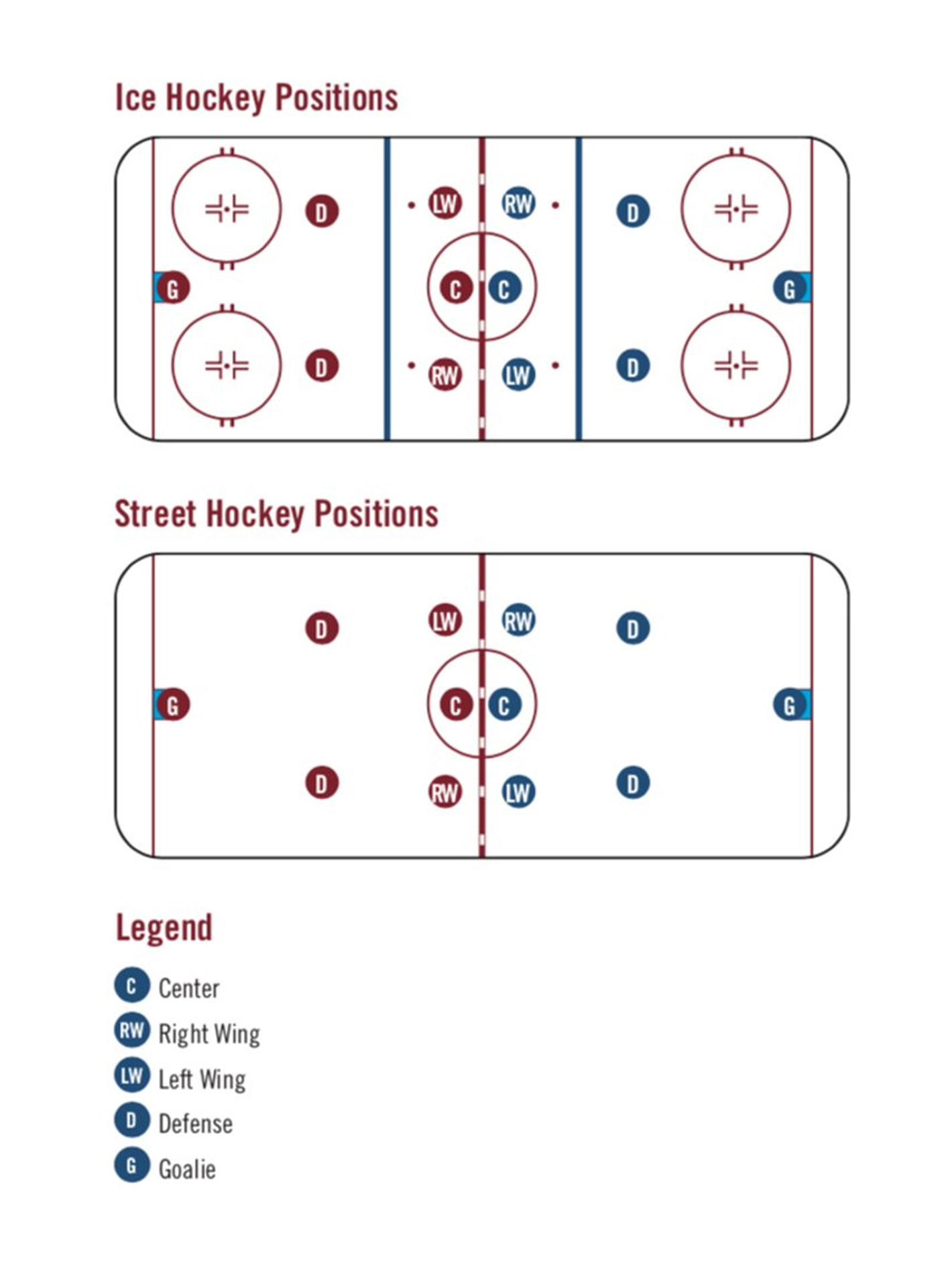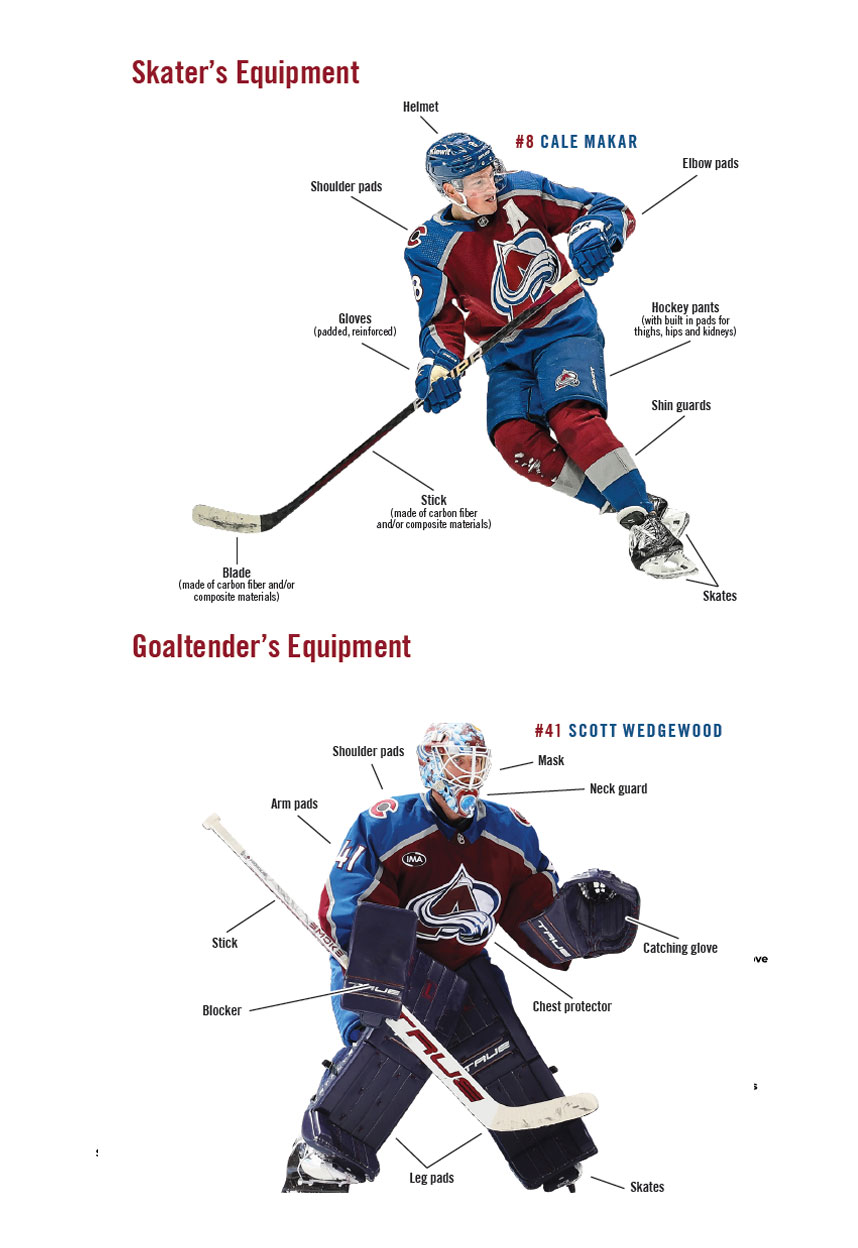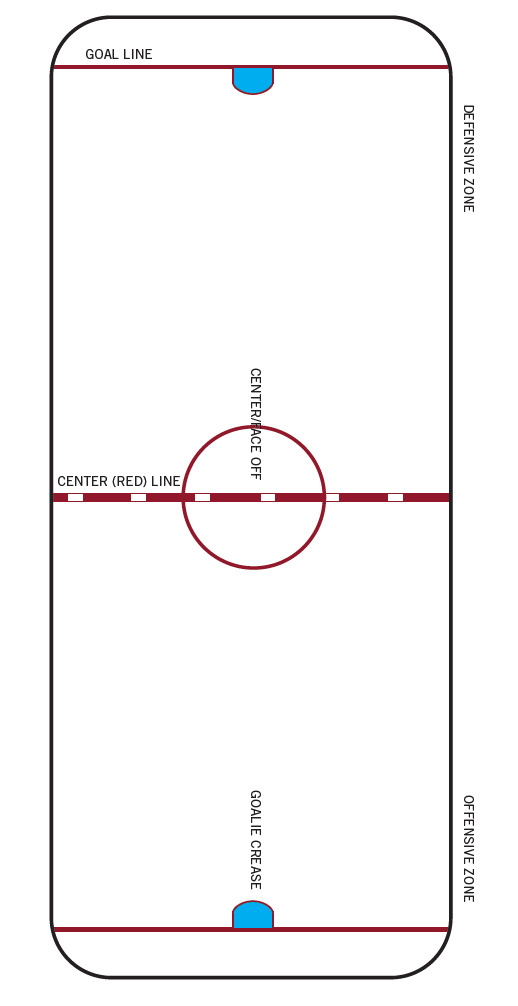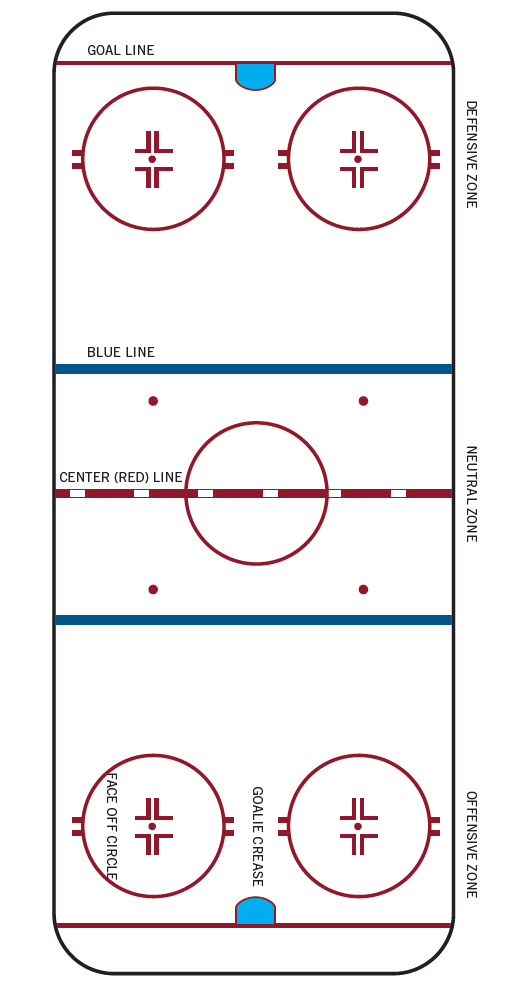-REV-200.png)
HOCKEY 101
What Is Hockey?
What Is Hockey?
Hockey is an exciting team sport that requires skill, strength and teamwork. Versions of hockey include: ice hockey, street hockey and inline hockey.
Ice Hockey
Ice hockey requires players to wear ice skates and pads and is played on an ice rink with a frozen rubber puck.
Street Hockey
Street hockey can be played on almost any indoor or outdoor surface. Empty parking lots, net-less tennis courts, blacktop playgrounds, basketball courts and indoor gyms can all become street hockey “rinks.”
Inline Hockey
Inline hockey is very similar to street hockey except players wear inline skates on their feet. Inline hockey is often referred to as “roller hockey” and can be played indoors or outdoors.
Object of the Game
The object of the game is to score more goals than the other team by shooting the puck or ball into your opponent’s net.
Teams and Players
To play hockey you must have 12 players in the game at any given time (six per team). The positions are three forwards, two defensemen and one goalie. Three forwards comprise one line consisting of a center (C), right wing (RW) and left wing (LW).
Game Format
A regulation NHL ice hockey game consists of three 20-minute periods, including two 18-minute intermissions. If the score is tied after all three periods, an extra five minute period called overtime, is played. If the score is still tied after the overtime period, a shootout takes place. The shootout consists of a single player from each team taking turns in a one-on-one breakaway against the goalie with no other players involved.
Positions
Center
The center is typically the team’s quarterback. The center usually directs play in both the offensive and defensive zones. The center also sets up plays for their teammates to score goals in the opposing zone and takes most of the faceoffs.
Right/Left Wing
The wings or wingers play on the right or left side of the center. They cover their areas as the forward line enters and plays in the opposing zone.
Right/Left Defense
Like wingers, right and left defenders mainly cover their areas both in their opposing zone and their own zone. In their own zone, they stay close to the goal so that they can help defend the goal from the opposing team. The defenders usually play behind the forward line. This allows them to keep the puck in play in the opposing zone and keeps them in position to more easily defend their own goal when the play returns to their zone.
Goalie
The goalie’s job is to stay in or near his/her goal area, which can be called the crease, and stop the other team from scoring. A goalie’s responsibility is to prevent the puck from entering the goal. He or she can kick it, catch it, grab it or bat it out of the way - just do not let it go past the goal line. The goalie usually plays the entire game and rarely moves away from his/her crease.

Equipment
Street Hockey Equipment
Street hockey is played with street hockey sticks (usually a wooden shaft with a plastic blade) and either a plastic puck or no-bounce ball. This equipment is specially designed for street hockey and works best on playgrounds and gym floors. It’s only slightly different from the equipment used to play ice hockey. Your best bet is to wear comfortable sports clothes and a T-shirt with your equipment. You should wear athletic shoes that are good for the gym or the playground.
Forward & Defenseman Gear
In regulation street hockey forwards and defensemen should wear elbow, knee and shin pads, a mouthguard and an approved protective helmet. However in physical education class or a pick-up game with your friends, equipment is not required but it is recommended.
Goalie Gear
Goalies are required to wear a helmet with a face mask, chest protector, blocking glove, catching glove and goalie leg pads. Goalie sticks are specially designed with a wider blade. For physical education class and pick-up games with your friends a minimum of a helmet with a mask, stick and gloves is required.
Ice Hockey Equipment
Due to the physical nature of the sport and speed of the game, ice hockey requires more pads. Most of the padding is worn underneath the player’s uniform and not seen. The most important piece of equipment is ice hockey skates. Ice hockey players use sticks that are usually made of a composite material and have a custom curve on the blade.
The Puck
The puck is five ounces of solid vulcanized rubber, three inches in diameter and one inch thick. The puck is frozen before games to make it bounce resistant.
Forward & Defenseman Gear
In regulation ice hockey forwards and defensemen are required to wear helmets, shoulder pads, elbow pads, gloves, shin guards and hockey pants. Many players elect to wear a protective shield attached to their helmet and a mouthguard.
Goalie Gear
Goalies are required to wear a helmet with a full facemask, a neck guard (to protect from skate blades), shoulder pads, arm pads and a chest protector. The signature pieces of goalie equipment are the blocker, catching glove and leg pads.

Division of Playing Surface
The ice hockey playing surface is divided into three distinct sections or zones. These areas are referred to as the offensive zone (area the team attacks from the blue line to the end of the boards), the neutral zone (area between the blue lines, divided by the red line) and the defensive zone (area the team defends from the end boards to the blue line). The zones are determined by lines that are painted in the ice and extend up the side boards. There are five primary lines on the playing surface–two red goal lines, two blue lines and a center red line.

Street Hockey
Street hockey can be played on almost any indoor or outdoor surface. An official street hockey rink, however, is divided into two sections or zones. These areas are referred to as the offensive zone and the defensive zone.

Ice Hockey
An official NHL rink is 200 feet long and 85 feet wide with rounded corners. Walls surround the ice to keep the puck in play. These walls, called boards, are three feet high with shatterproof glass extending from the top to protect fans from flying pucks.
© Colorado Avalanche Hockey 101. All Rights Reserved.
